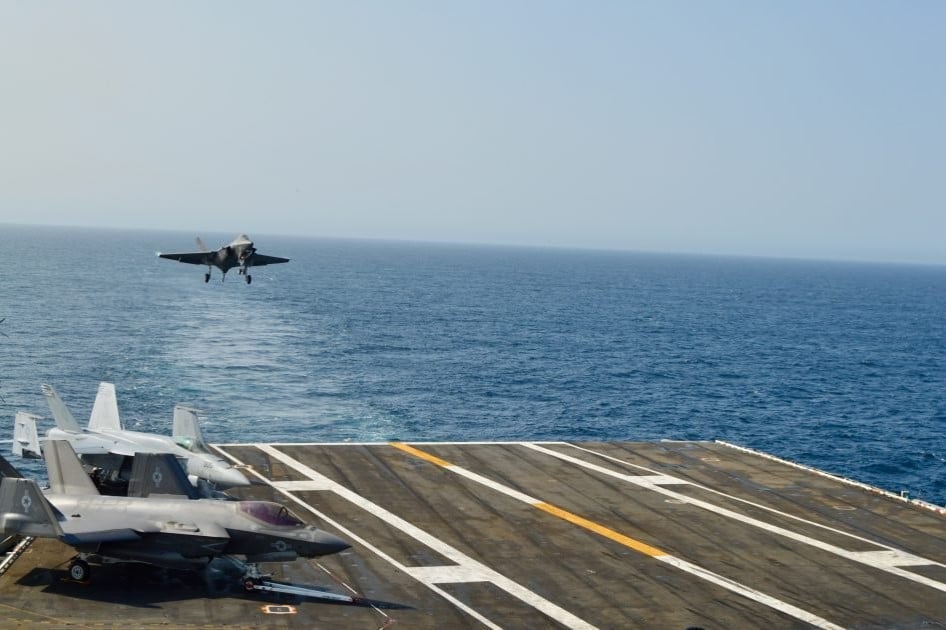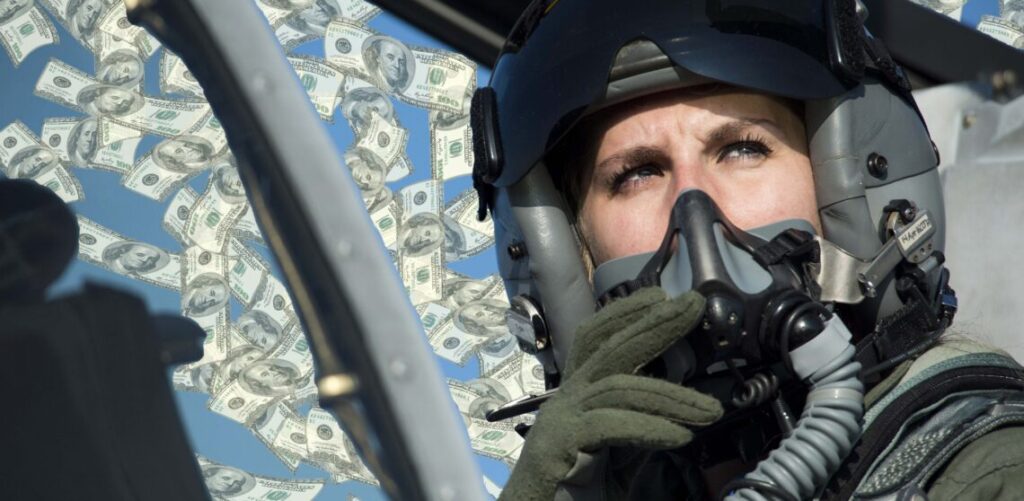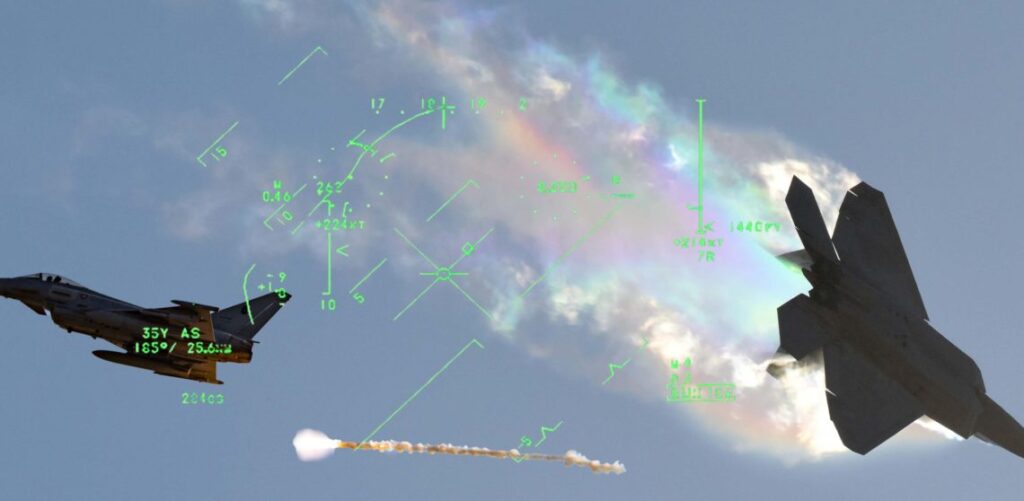An F-35C with U.S. Navy Strike Fighter Squadron (VFA) 147 crashed on the deck of the USS Carl Vinson during routine flight operations in the South China Sea on Monday, Jan. 24, according to a press release from the Navy.
The pilot ejected safely and was recovered from the water by helicopter. Seven Sailors were injured in what the Navy is referring to as a “landing mishap” at this time. Three of those Sailors, including the pilot, required medevac to Manila, Philippines for treatment, but are all now listed in stable condition. The other four were treated aboard the ship and three have already been released. The status of the fourth who remained on ship isn’t clear at this time.
U.S. Naval Institute’s Sam Lagrone reports that the aircraft impacted the flight deck and subsequently fell into the water. Damage to the flight deck was “superficial” and flight operations were quickly resumed. An investigation into the mishap is already underway and efforts to recover the lost aircraft are surely already in motion, especially given the region in which this occurred.

Related: 10 great airplanes before the F-35 that overcame rough starts
The USS Carl Vinson (CVN 70), is currently operating with the USS Abraham Lincoln (CVN 72), USS America and USS Essex in the South China Sea along with units from the Japanese Maritime Self Defense Force. The mishap comes just a few weeks from the Marine Corps’ milestone deployment of VMFA-314, its first squadron to transition to the F-35C variant, aboard the Abraham Lincoln on Jan. 6.
The Carl Vinson and the Abraham Lincoln Carrier Strike Groups, composed of 14,000 Marines and Sailors, had just begun conducting joint operations on Sunday, Jan. 23. The significant presence for the training operation in the Indo-Pacific region “…highlights the U.S. Navy’s ability to deliver overwhelming maritime force, when called upon, to support a free and open Indo-Pacific region,” said Rear Adm. Dan Martin, commander of Carrier Strike Group 1.

Related: What is the South China Sea and why is the US Navy challenging China there?
The crash marks the first loss of the “C” variant that entered service in 2019, but it is the seventh such incident involving an F-35. The most recent mishap prior to this, on Jan. 6, led to the grounding of South Korea’s F-35A fleet after a pilot was forced to make a belly landing because of avionics issues and a landing gear malfunction. There was also the British F-35B that failed to gain enough speed for takeoff and toppled over the deck of the HMS Queen Elizabeth in November 2021, although issues with the aircraft were ruled out as the cause of that crash, as an intake cover was left on for flight and sucked into the engine, causing the lack of power.
Related: Image of British F-35 fished out of sea seems to emerge online
Designed for standard Navy and Marine Corps carrier operations, the F-35C has a larger wingspan than its predecessors to allow for slower landing speed required for carrier operations. Those wingtips fold in to provide more room for storage aboard the carrier deck, and the landing gear is reinforced to accommodate the stresses of catapult-assisted takeoff and carrier landing. While coming in at slightly cheaper than the short takeoff, vertical landing (STOVL) F-35B variant, the loss of a single F-35C comes at a cost of $94.4 million according to Navy figures, while the Project on Government Oversight (POGO) lists the single unit cost as high as $117.3 million.
Read more from Sandboxx News:
- The Air Force wants a new fighter to fill in for the F-35
- Why 5th Generation ‘Minus’ fighters are the future
- Lightning Carriers: How the Marines are teaching an old ship new tricks
- F-35 operating costs may exceed funding by billions per year
- Carrier Woes: The Navy’s fighters can’t reach China
Feature image: U.S. Navy




